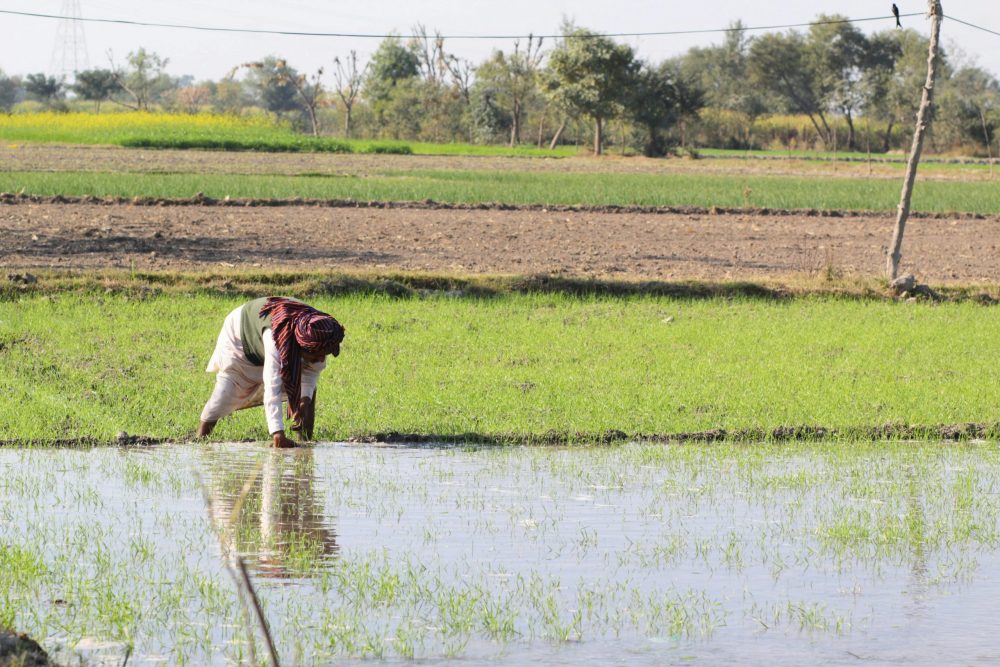More than one in every three children born in Pakistan today is stunted. Child stunting, measured as low height for age, is associated with numerous health, cognition and productivity risks with potential intergenerational impacts. With a stunting rate of 38 percent (Demographic & Health Survey 2018), Pakistan is still among the group of countries with the highest rates of stunting globally and the pace of decline remains slow and uneven. In Sindh, for example, things have worsened over time, with one in two children now stunted!
The policy response to this enormous health crisis has been almost entirely centered on interventions at the household level—reducing open defecation (OD), improving household behaviors like child feeding and care practices and food intake.
A recent World Bank report, which I co-authored, suggests that a major shift is this policy focus is required for significant progress on child stunting. The report begins by showing that over the past 15 years Pakistan has made enormous progress in reducing extreme poverty, with the poverty rate falling from 64 percent to just under 25 percent in 2016. This has improved dietary diversity, even among the poorest, and increased household investment in a range of assets, including toilets within the home. This has, in turn, led to a major drop in OD, from 29 percent to just 13 percent. Curative care has also expanded, with the mainstreaming of basic health units and the lady health worker program.
Why has progress on all these fronts made virtually no dent in rates of diarrhea and stunting?
In the report we argue that to reconcile these apparently anomalous facts, we need to refocus attention on why arguments for ending OD were made in the first place. The intended benefit of ending OD was to ensure the safe removal of fecal waste away from human settlements and waterways, in order to contain the bacterial contamination of water, soil and food. The role of E. coli bacteria in diarrhea prevalence has been known for a long time. Now research has also shown the far more damaging impact of environmental enteropathy (EE), a process by which fecal pathogens like E. coli can permanently damage the intestinal villi of young children making it difficult for them to absorb nutrients even during periods when there are no signs of diarrhea. EE leads to both stunting and a compromised immune system, with lifelong health challenges.
So, what does the available evidence on E. coli contamination in Pakistan tell us? While there is no systematic testing of water or soil, the Pakistan Council for Research in Water Resources (PCRWR) has been conducting water quality tests in some locations. These tests almost invariably reveal high levels of E. coli. contamination.
Water tests done as part of a long-term study in rural Punjab and Sindh that is being conducted by me and my co-authors at the World Bank, show that more than one-third of the water samples drawn directly from hand and motorized pumps, as well as from piped water supply systems, in rural Punjab were contaminated with E. coli bacteria. This numbers are consistent with PCRWR (2011) for Punjab. What is more alarming is that the rate of bacterial contamination rises to 50 percent, when water storage devices within the home are tested. In Sindh, things were much worse. Close to 60 percent of ground water was contaminated at source, with contamination rates rising to 75 percent when water storage devices were tested.
Why is ground water in the most densely populated areas of rural Pakistan so contaminated? The answer lies in the way expansion in access to “improved” toilets and water supply has been achieved. There has been almost no public investment in water or sanitation systems in rural Pakistan. Instead, households have largely self-provided for both, and have done so in the absence of even a basic set of regulatory guidelines. The result has been devastating, especially in the poorest districts. In rural Sindh, for example, most toilets are of the leaching pit or open drain variety and are built in close proximity to water pumps. This sets the stage for the substrate contamination of ground water, especially where the aquifer is shallow. Open drain toilets further concentrate untreated fecal waste around human settlements and much of the waste flowing in open drains eventually enters surface water systems spreading the contamination. Fecal waste is also dumped in open trash heaps around villages, spreading more contamination to surface soil. It doesn’t end here. Untreated waste water is routinely mixed with ground and surface water for crop irrigation. This creates further downstream effects, contaminating the food grown and distributed for consumption in the major urban centers of the country, where it is consumed by the rich and the poor alike. Together this chain of contamination multiplies the channels through which the oral transmission of fecal bacteria can occur—food, flies, fingers, fields, and fluids.
The incidence of diarrhea in Sindh’s largest cities provides clear evidence of this. Even the richest households in cities like Karachi and Hyderabad report diarrhea rates among young children of close to 30 percent. In fact, as we show in the report, living in proximity to an area with poor quality sanitation provides roughly the same exposure to fecal pathogens as being poor. Interestingly, the evidence also shows that areas with the highest levels of diarrhea and stunting engage in roughly similar or better health behaviors than areas with lower levels.
If anything, stunting, diarrhea and other types of morbidity could well have increased in Pakistan, were it not for the decline in poverty and improvements in diet and primary health care. This is not to suggest that these factors do not need attention. They do! The problem is one of squarely confronting what is first order. Dietary, curative and behavioral improvements can serve as a temporary bulwark at best, unless the total fecal burden in the environment is reduced, the treatment of water is prioritized and the use of untreated waste water for crop irrigation is controlled.
Dr. Ghazala Mansuri is the Lead Economist at the World Bank.




